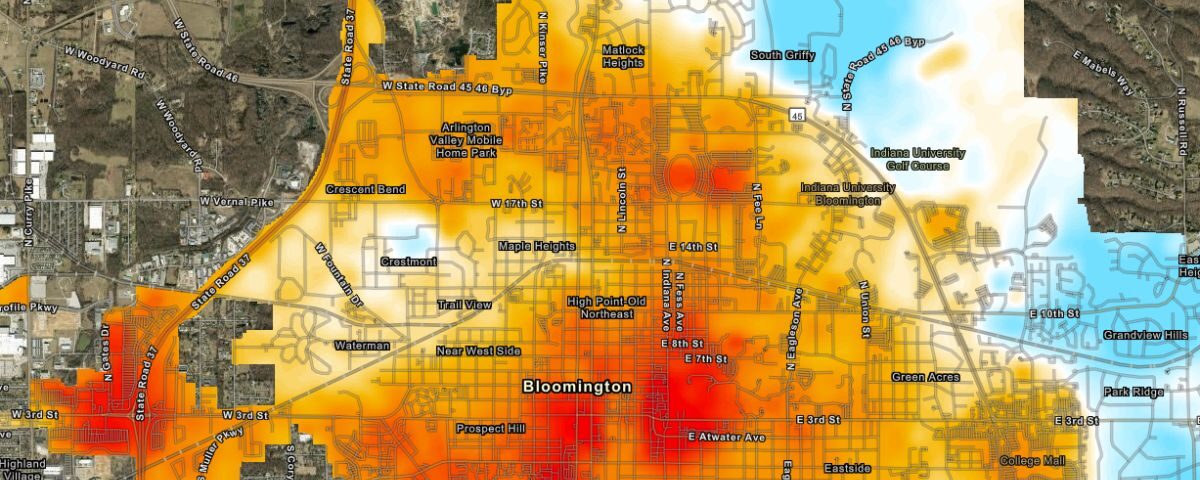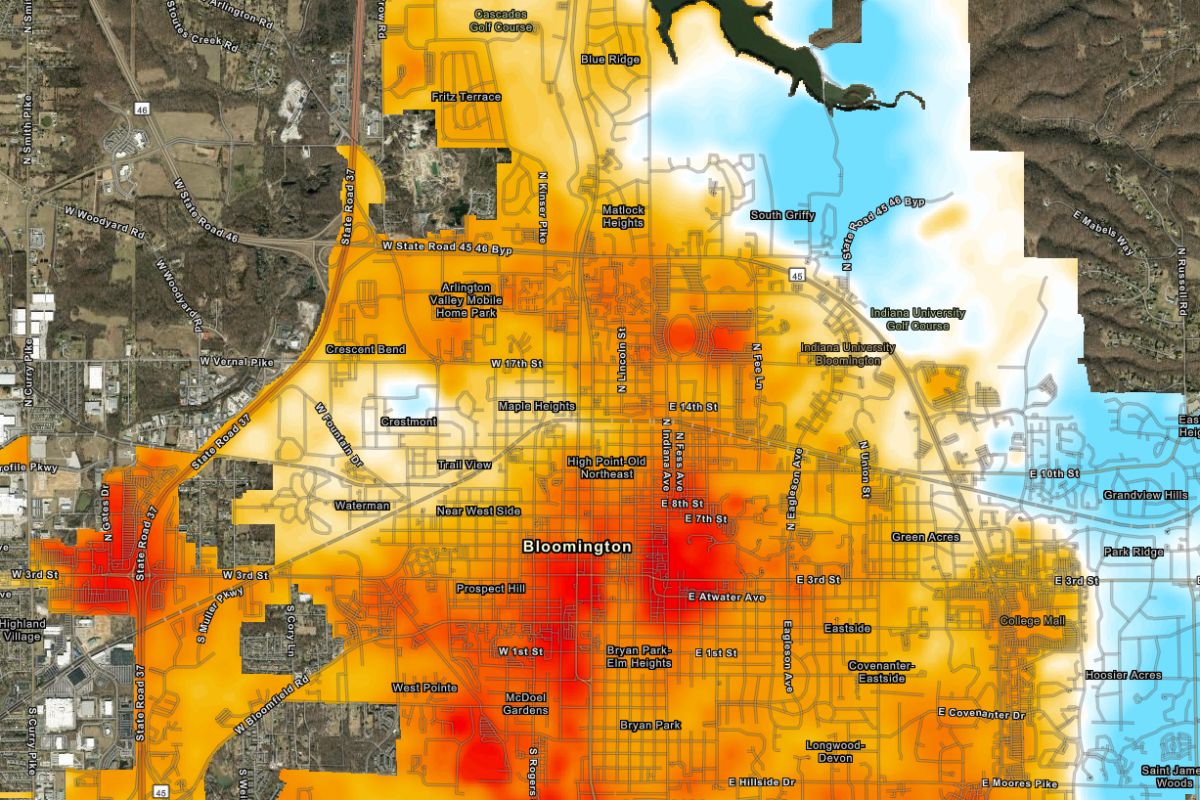New Study Maps Bloomington’s Heat and Air Quality

A new study commissioned by the city mapped the severity of extreme heat and poor air quality around Bloomington to focus mitigation efforts.
Bloomington’s Assistant Director of Sustainability Shawn Miya said the presence of concrete and asphalt concentrate heat, while green spaces and trees limit it. Hot regions include the College Mall area and downtown, according to the study published by CAPA Strategies.
“What was surprising is the 12-degree difference between Griffy Lake and downtown,” Miya said. That is a significant difference between those two locations.”
Miya also said air quality was worst in areas with heavy vehicle traffic. The study said East Hillside Drive and South Walnut Street have high levels of small particulate matter.
The Centers for Disease Control said poor air quality and extreme heat are linked to health issues. For both hazards, it said children, adults 65 and older and people with heart and lung conditions are at higher risk.
Miya said the results from these studies help direct cooling strategies and limit health risks.
“We will be able to target mitigation strategies such as planting trees, increasing green infrastructures, such as bioswales, rain gardens,” she said.
Miya said the city already provided money for tree planting this year, and she also hopes to provide businesses with grants for cool roofs that reflect sunlight.





